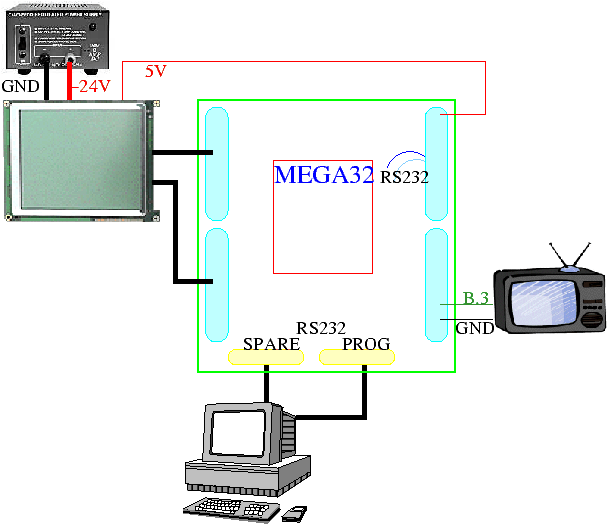
ECE 476: BASIC Interpreter David Hodgdon |
Abstract: The BASIC Interpreter final project implements a very simple BASIC interpreter, written in embedded C for the Atmel Mega32 microcontroller. A Seiko G321D 320X200 LCD with a built-in SED1330F controller will act as a textual display. Variable width square waves are feed through the sound port of a television to produce ``music.'' The lab PC acts as a filesystem, feeding the microcontroller the BASIC file one character at a time as requested, and as a user input device (keyboard).
|
|
|
See Figure 1 for a high level concept of the project. The LCD was chosen as the textual display device because the SED1330F controller provides high-level commands that aid in a simple design. The LCD is better than TV video generation because
|
|
For debugging purposes and to reduce the time spend in lab, the BASIC interpreter runs both on the microcontroller (attached to the PC) and separately on the PC. Compiling for the microcontroller requires the ATMEL to be defined.
|
|
|
|
|
|
|
|
|
|
|
|
|
|
|
|
|
|
|
|
To connect the LCD to the whiteboard, I soldered a pin header (a row of pins) onto the the lcd connections (See Figure 3).
|
|
|
|
|
|
|
|
|
|
|
|
|
|
|
Table 1: Parts and Costs
Item Cost Source Seiko LCD $10 David Li MEGA32 $8 Lab TV Speakers $0 Lab 24V Power Supply $0 Lab White board $5 Lab Total $23.00
|
|
|
|
|
|
|
|
|
This document was translated from LATEX by HEVEA.